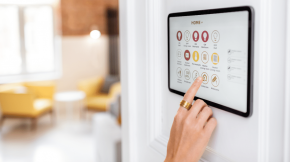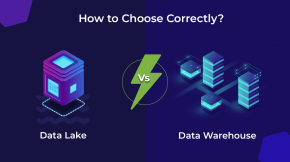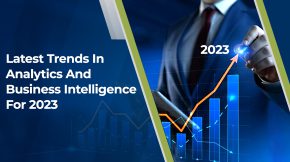Best Power BI Dashboard Examples in 2025
How data visualization works is one of the most common question every organization ask . They want to know if we have any Power BI Dashboards examples. If not Power BI, perhaps examples from other platforms?
Today, data holds a great deal of importance for businesses. 90% of business professionals and enterprise analysts agree that data analytics is key to digital transformation initiatives. Despite this, many businesses still have difficulty using data effectively for decision-making. Data drives everything we do these days, so understanding it is crucial for gaining a competitive edge. Getting started with data is one thing, but what can you do with it? Especially for the small businesses. Small Business Data Analytics helps to ensure stable business growth and to evaluate efficiency of business operations
That is why we want to share some data visualization examples with you to give you a better understanding of how these platforms can help your organization. Below are Microsoft Power BI dashboards we created for clients to provide you with a better insight into how this platform can help your organization visualize your data for better analysis and execution.
Uses of Power BI
More and more companies use Power BI dashboards. Why? To understand their data better. The dashboards visualize data clearly. This helps companies make smarter choices. They see Power BI dashboard examples and realise its potential. Leaders can spot trends and issues quickly. Power BI also helps share data across the company. Everyone stays on the same page. Plus, Power BI works on any device. Leaders can check reports on phones or tablets. No need to be in office. So that you can make an easy, safe choice, Power BI dashboard examples are here to save time and effort. The data insights help improve all parts of the business. Companies that have Power BI dashboard often see faster growth.
Key Features of Power BI
Power BI dashboard have lots of useful features. The dashboard brings data together in one place. This gives the full picture. Pretty charts make the data easy to understand. Filtering lets users focus on what matters. Power BI quickly processes huge amounts of data. Even live data direct from databases. Alerts can flag changes or issues. Reports can be scheduled to auto-send by email. On top of that, Power BI has AI capabilities. It finds patterns and trends in data on its own. The system gets smarter with use. Power BI also works across platforms. Mobile, desktop and web. That’s why Power BI dashboard examples are so powerful for understanding how data will be transformed.
What Makes a Great Power BI Dashboard
We say great Power BI dashboard examples set the context. They are visual and simple. They focus on key data only. Too much data causes confusion. Great dashboards use colors, charts and visuals wisely. These make complex data easy to grasp. Metrics should focus on critical KPIs. Filters allow drilling down into details. A great dashboard fits on one screen. No scrolling required. This puts everything important in front of users. Navigation is intuitive and consistent. Users can click to drill down. Or back up to see the big picture. Great Power BI dashboard examples (like the one you will see next) enhance data-driven decision-making. They help leaders spot insights fast. The result is smarter choices and more productivity.
Power BI Dashboard Examples
The examples below give you an idea of what you can do with Power BI dashboards set up expressly to your needs.
As a bonus, we embedded these dashboards into this post to interact with the dashboard features to find out how easy they are to use for your organization. Note: the numbers and info below have been changed to protect our client’s privacy.
1. HR Analytics Dashboard
Often specific departments in a company reach out to us because they need a Power BI dashboard for their specific needs. For example, we helped an engineering firm’s clients’ HR department with a dashboard to improve their strategic personnel resource management.
In other words, the HR team could use this visual data to improve their decisions on hiring, onboarding, and retaining employees. These decisions can affect many things throughout the organization, including better work environments, higher employee productivity, and even a possible increase in the bottom line.
To help the HR department, we created several reports with information on:
- Demographics- gender, ethnicity, designation, locations, seniority, etc.
- Awards- annual performances, award types, promotions, and raises.
- Hiring- number of applications, prospective employee demographics, and positions.
- Terminations- demographic, location, job function, and tenure for terminated employees.
By having access to this demographic and geographic data, the HR department can ensure they follow best practices in their organization and follow all state and federal guidelines for hiring, retaining, and terminating employees.
Top management can use our hr dashboards to monitor the KPIs that are needed to run the enterprises effectively. Furthermore, you can view the employee performance dashboard and data based on demographics, hires, terminations, and open positions graphically. Attrition risks can also be identified with our workforce analytics, allowing you to take preventative measures. Your employees can also be kept if you determine what issues need to be addressed.
2. Project Management Dashboard
We created the first Power BI dashboard for an Audio/Video manufacturing company to test their projects, resource allotments, and skills development. The reports helped our clients enhance the effectiveness of their projects.
The example below has several charts in one central location to explain how multiple projects worked holistically.
The reports offer information about:
- Number of active projects
- Project status
- Project budget
- Task Management
- Resource Utilization
With simple coloring designs, executives can glance at the report and see how many projects are:
- In-Progress/Awaited
- Good
- Warning
- Risk
Furthermore, employees can access the status of specific projects like those at risk by clicking on the red areas of the report.
You can use our Project Management dashboards to track project progress, status (current, paused, completed, etc.), and allocated resources (budget). Each task’s status and time spent on it can be viewed with our dashboards. Moreover, it will help you to keep track of how many tasks are started, delayed, and completed in a timely manner.
3. Financial Dashboard
Another department that greatly benefits from data visualization dashboards is the finance department. With so many numbers to account for (no pun intended) in finance, it is not surprising that many departments want easy ways to understand their financials.
That is why we use Power BI to track common financial measurements such as:
- Balance Sheets
- Cash Flow
- Profit & Loss Statements
- Liabilities and Expenditures
- YoY comparisons- up to 2 years of Assets, Liabilities, Income, and Expenditures
- Rations- working capital, KPIs (loss ratio, quick ratio, etc.)
With our Financial Dashboards, you can keep track of your assets and liabilities, and your company’s financial success, including your expenses and income reports. The continuous growth of a company is guaranteed when strategies and operational efforts are complemented by financial dashboards.
4. Sales Dashboards
Sales data is the key to making your company stand out in today’s fast-paced, hypercompetitive economy. The sales representatives require a thorough understanding of the department’s accomplishments, from forecasting analytics to employee performance information. By using our sales dashboards, you will have a better understanding of what works in your business. You will be able to make better decisions based on factual data rather than intuition alone.
Our Dynamic Sales dashboards:
- Sales Analysis Dashboard
- Lead Analysis
- Forecast Dashboard
- Sales Comparison Dashboard
- Sales Performance Dashboard
Our sales dashboards allow you to easily analyze sales data, identify trends, and forecast future sales. Additionally, it will help sales professionals identify sales opportunities, sales points, and potential revenue-generating improvements. Furthermore, sales teams can keep an eye on the number of leads that come in over a period of time.
5. Marketing Dashboards
The marketing department and agencies today must manage massive amounts of data using static reports and spreadsheets, which can lead to complexity and data loss. Our Marketing Dashboards address this complexity at all levels of management from the junior level to the c-level. By using our marketing dashboards and clear strategies, you can not only measure your campaigns’ performance more efficiently but also uncover valuable insights you may have overlooked before.
Our Dynamic Marketing Dashboards:
- Website Traffic Dashboard
- Lead Analysis Dashboard
- Social Media Dashboard
- Email Marketing Performance Dashboard
- MQL Status Dashboard
Our dashboards enable you to monitor website activity and understand the impact of individual efforts. In addition, you can use our dashboards to explore what audience receives your emails and whether it responds to your call to action. Monitoring several social media platforms can also help you increase website traffic through our dashboards.
Conclusion
If you are looking for a better way to understand your data, then the right Business Intelligence Consulting Services can help your entire team analyze and act on your data more effectively. We can easily customize these dashboards to your specific business needs or connect with the data source of your choice at a reasonable time and cost. If you want to see additional data visualization examples to help you decide which data you need help understanding most, contact us for Power BI Consulting today for a free consultation.












